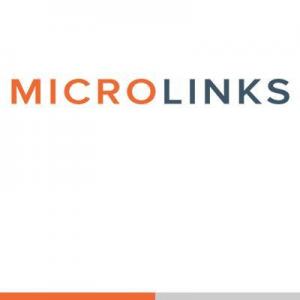“More than Micro” Milestone 1: Launch of the original Microlinks site (2003)
We’re getting ready to relaunch Microlinks.org, making it easier for you to connect with your peers and stay in-the-know about inclusive market systems development. And so, we’re posting a short blog series called “More than Micro” that looks back at the other pivotal milestones that made Microlinks what it is today. Over the next few weeks, we’ll be reminiscing about key moments in Microlinks’ 12-year history and looking forward to a vibrant future.
The Milestone
Let’s start at the very beginning: What was the Microlinks site like when it first began? And how did it grow into the vibrant community that it is today?
In 2004, the QED Group, LLC and the International Resources Group (now IRG/Engility) launched Microlinks.org under USAID’s Accelerated Microenterprise Advancement Project (AMAP). As Thom Sinclair, CGAP’s Gateway Academy Manager, noted, “The launch of Microlinks allowed the community working in microfinance and microenterprise with USAID to come together for the first time online to share knowledge and learn from each other.”
Built on good practices gleaned from an extensive benchmarking process with other major development institutions, the site was envisioned as a dynamic community knowledge-sharing platform (and, in fact, held its first online conference before it even launched). However, its look, feel and functionality tested the patience of many of its users during that first year.
The Challenges
“If you build it, they will come” may have worked for Kevin Costner in Field of Dreams, but for the early Microlinks team, success depended on hard work, persistence and creativity -- and extensive consultation with the site’s users.
Former USAID Activity Manager Stacey Young recalled, “The site had been up for about a year when we initiated what was essentially a listening tour of users. We picked the nicest, most even-tempered, unflappable member of the team and sent her around to interview more than 50 users -- USAID staff and implementing partners. People were frustrated because they knew the content was valuable, and they needed it, but the search function was awful, the taxonomy was perplexing, and the visual experience was off-putting. Based on feedback, we initiated extensive refinements to the site, and that was when we really began to pick up users who were also keen to contribute and interact.
“The site attracted a lot of attention because it was doing interactive things that USAID sites just didn’t do at the time. Unfortunately, that also meant that there was no experience base to build on, and we got caught out on some 508 and privacy stuff. LPA shut the site down in the summer of 2005, and it took 10 weeks to get it turned back on. We had a big party to celebrate, and for years after provided advice to other USAID sites on how they could avoid the same fate. I had a checklist I used to send around called, “How to Keep Your Website from Getting Shut Down.” So much fun.”
During these years, we grappled with big and small questions: What is Microlinks’ value proposition? How can we attract users to Microlinks? How do we build the listserv? What content should be promoted this month? How do we use the site to support and expand the learning communities developing around AMAP’s microfinance and business development seminar series?
In 2010, Microlinks 2.0 moved to a Drupal open source platform. Sinclair commented, “The move [to Drupal] allowed for greater community building, easier, more intuitive content management and allowed USAID to further expand its influence through greater knowledge sharing and dissemination.”
Its Significance
The Microlinks website—its structure, functionalities, topics, and community members—have grown by leaps and bounds since its 2003 launch. Today, Microlinks touches almost every country. Every month, 8,000 unique users come to Microlinks to learn and connect around good practices in inclusive market systems development. As Wade Channell, USAID’s Economic Growth Specialist for Gender, stated, “Microlinks is USAID's most accessible and robust web site. I consider Microlinks an invaluable resource and one that makes me proud of our knowledge management.”
Through this pioneering approach and subsequent success, Microlinks paved the way for a family of community websites, including Agrilinks and USAID Learning Lab.


